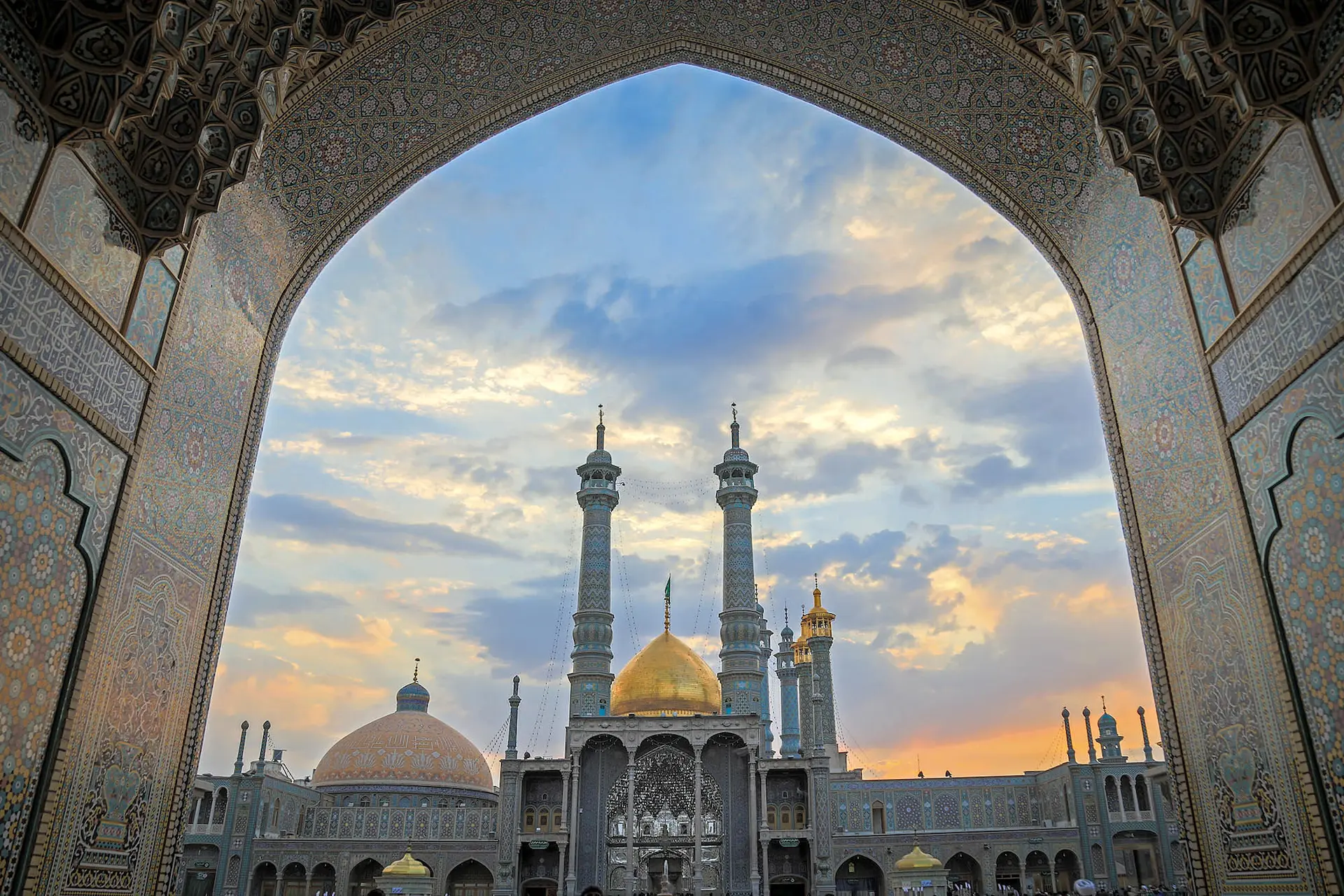Visiting a new country often means adjusting to different cultural norms, and Iran’s dress code is no exception. Understanding and respecting local customs will make your experience smoother and more enjoyable. As an Islamic nation, Iran has specific clothing guidelines for both residents and visitors.
Media often portrays Iran’s dress code as overly strict, making it a major concern for travelers. In reality, while there are rules, they aren’t as severe as many think. Iranian women, for example, enjoy wearing colorful and fashionable outfits that adhere to these guidelines. The dress code is less about stringent rules and more about respecting local traditions.
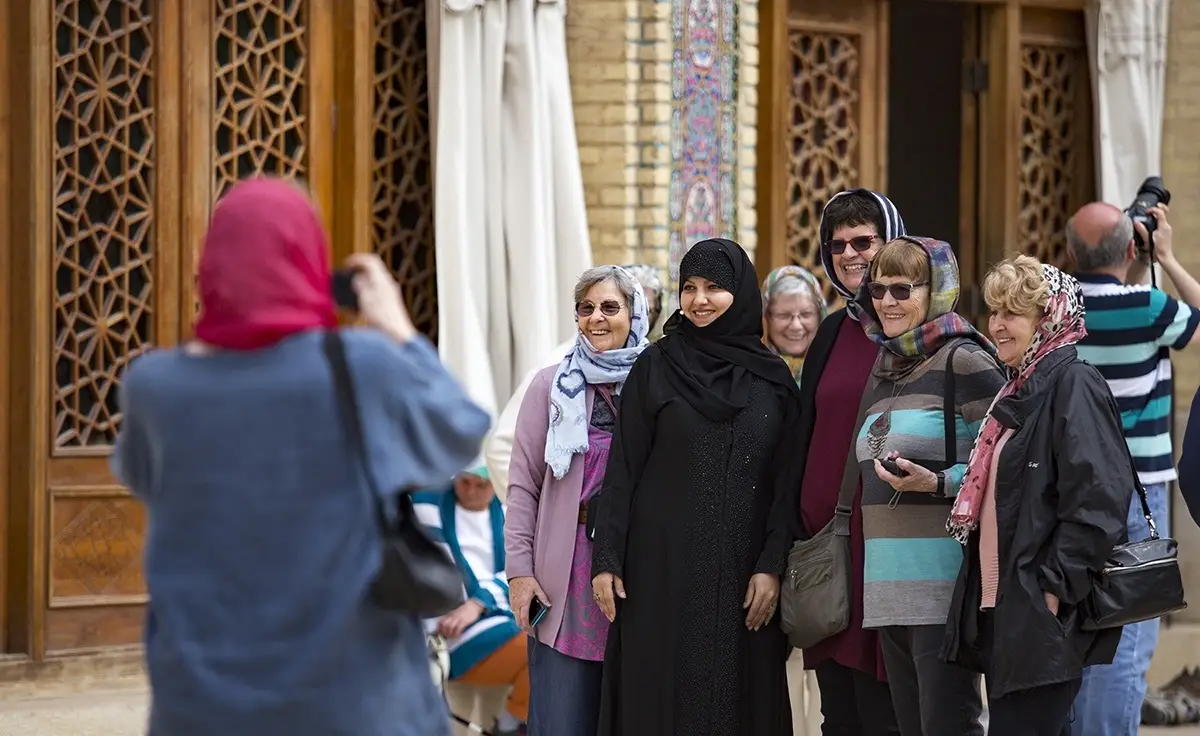
Dress Code for Tourists in Iran
For tourists, the dress code in Iran involves simple and manageable rules. You might worry about potential penalties, but the most you’ll likely encounter is a polite request to adjust your attire. Iranian women are known for their modesty and unique style, setting them apart from others in the Middle East and Islamic countries.
Many travelers are pleasantly surprised upon arrival, seeing stylish and well-dressed Iranian women. Nevertheless, it’s essential to be mindful of local customs to ensure a respectful and enjoyable visit. In this blog post, you’ll explore everything you need to know about Iran’s dress code, including practical tips and insights to help you blend in seamlessly.
Hijab in Iran
In Iran, “hijab” means dressing modestly, a concept rooted in Islamic culture. Today, it usually refers to covering the head. Both Iranian women and female tourists must cover their hair in public. Many Iranian women prefer to cover just the top of their head, allowing some hair to show from the front or back of the headscarf. The easiest way to comply is by wearing a headscarf, which you can easily find in local shops.
In winter, hats are also a suitable option. Hijab also includes wearing clothing that covers the body according to Iranian dress code guidelines. To learn more about female solo traveling, read the article “A Complete Guide for Solo Female Travelers to Iran.”
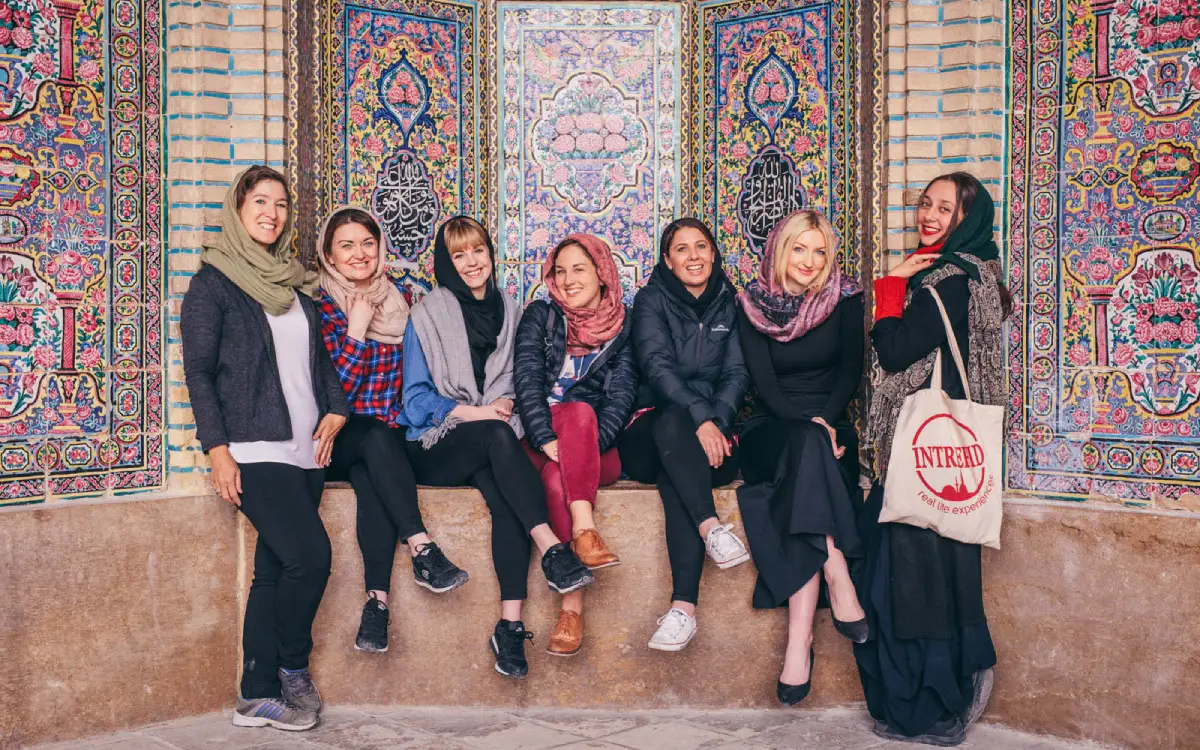
Just like in any country, visitors to Iran need to respect local laws. As an Islamic nation, Iran has specific rules for women’s clothing that everyone must follow. Regardless of nationality, women are required to wear hijab. However, these rules are more lenient for travelers, and authorities understand if you are not familiar with all the details of wearing a hijab. Be aware that women must wear hijab as soon as they disembark from the plane at any Iranian airport.
Dress Code for Women in Iran
When visiting Iran, women need to wear a headscarf or hijab to cover their hair and neck. It’s also important to choose loose-fitting clothing that covers your arms and legs.
Although these rules might seem strict at first, Iran is generally flexible with tourists. The emphasis on modesty comes from Islamic traditions and is expected from everyone. However, tourists usually find that local authorities are more about providing helpful guidance than strict enforcement. You’ll likely encounter friendly advice and gentle corrections instead of harsh penalties.
Following this, you will find more details about women’s clothing in Iran.
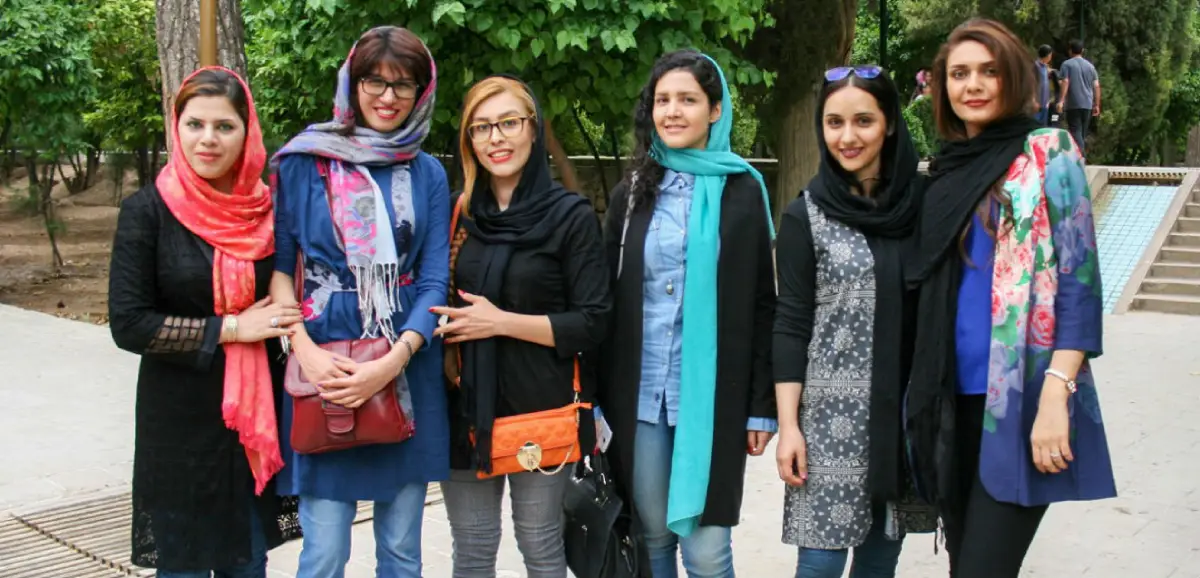
Covering Legs and Body
Traveling to Iran means respecting its unique dress code, especially for women. In Iran, women are expected to keep their legs covered down to the ankles. You should wear loose tunics or coats with long sleeves that cover your lower waist. Despite common misconceptions, skinny pants and leggings are very popular in Iran. Long dresses and skirts are also suitable, but they must not be see-through.
Embracing Colors
There is a misconception that women in Iran cannot wear colorful clothing. In fact, colorful clothes are welcome and widely worn. Iranian women enjoy expressing their fashion sense with vibrant headscarves and manteaus. You can bring your colorful outfits as long as they follow the general dress code.
Manteau
A manteau is a long overcoat that covers the lower waist, commonly worn over a shirt with long pants or jeans. Manteaus come in various materials, styles, and colors, suitable for different seasons. If you don’t have one, you can easily buy a manteau in Iran. Most women prefer wearing manteaus because they are versatile and can be long, short, loose, or tight.
Tunics
Tunics are a great option for summer. As long as they cover your hips, they are acceptable. You can pair them with skinny jeans or pants for a comfortable yet modest look.
Scarf and Hair Covering
Iranian law requires women to cover their hair. You can use colorful and beautiful headscarves, which are especially practical in winter. It’s common to let some hair show around your face, and this is perfectly acceptable.
Footwear
There are no restrictions on footwear in Iran. You can wear boots, high heels, sandals, or any other type of shoe that suits your style and the weather. Sandals are very popular during the summer, and painted nails are also fine. Choose comfortable shoes that allow you to walk around easily, as you’ll likely encounter various terrains and attractions in Iran. Remember to remove your shoes when visiting mosques or religious sites; thus, easily removable footwear like slip-on shoes or sandals is practical and respectful.
Makeup
Wearing makeup is widely accepted in Iran, especially in big cities. Iranian women often use foundation, mascara, lipstick, and even heavier makeup for parties and gatherings. Feel free to bring your makeup kit and enjoy blending in with the local fashion.
Chador
A chador is a large piece of cloth that covers a woman from head to toe. It is not mandatory except in religious places like mosques and holy shrines. You can borrow one at these sites if needed. Chadors in holy places are often patterned and colorful, while those worn by choice are usually black and plain.
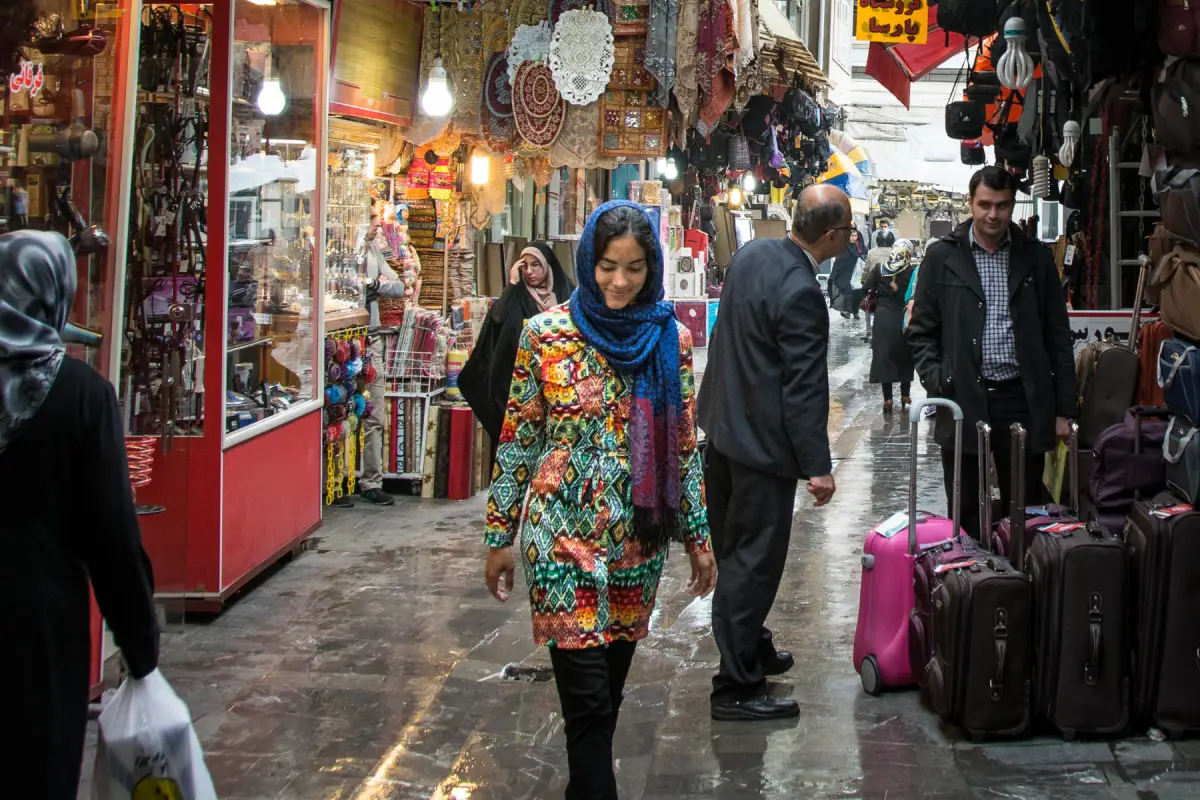
Tattoos
Tattoos are becoming more popular in Iran, especially among younger people. If you have visible tattoos, there’s no need to cover them.
Understanding the dress code in Iran helps you respect the culture while feeling comfortable during your visit. Below, you’ll find more details about men’s clothing in Iran.
Dress Code for Men in Iran
When visiting Iran, men are expected to dress modestly in public places. This means avoiding sleeveless shirts and shorts. T-shirts or long-sleeved shirts paired with long pants are suitable choices. For activities like swimming, you can wear swimming suits at designated areas such as beaches and pools. Following these guidelines ensures you respect local customs while enjoying your time in Iran.
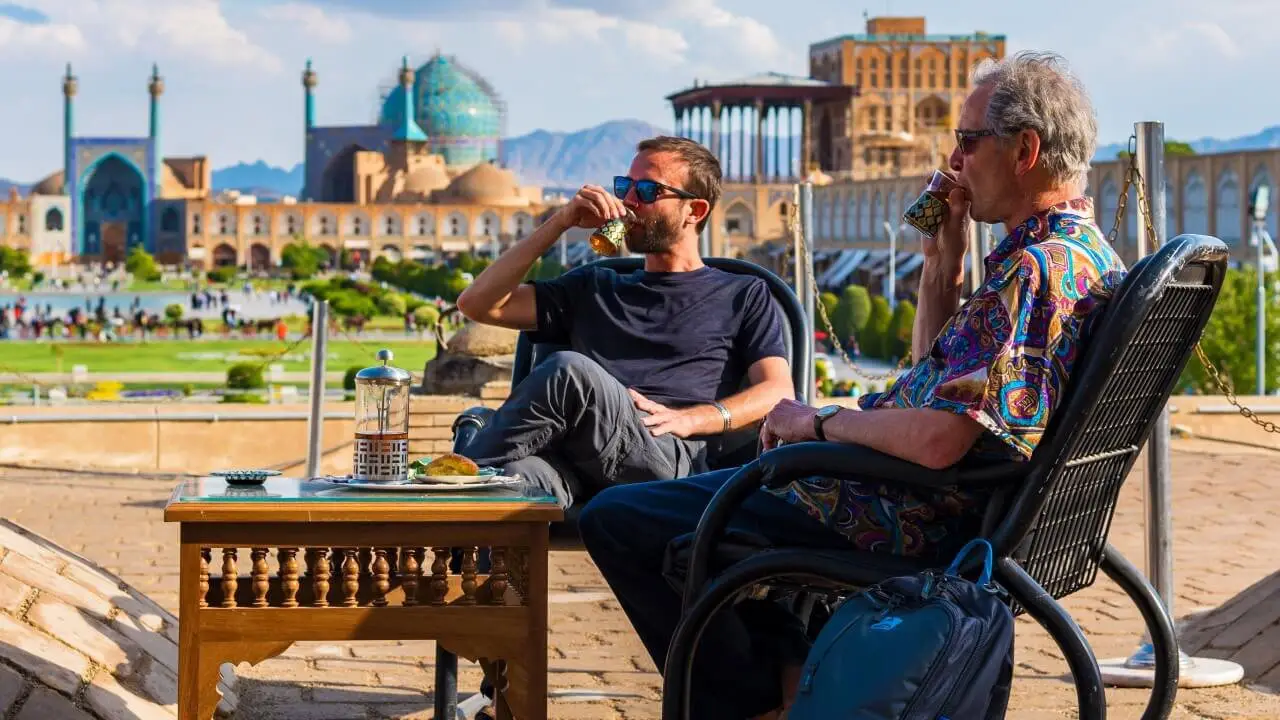
Traditional Clothing in Iran
Iran is a country rich in cultural diversity, with various ethnic groups spread across its regions. Each group has its own language, traditions, and distinctive clothing styles that reflect their heritage.
Traditional clothing in Iran varies widely depending on the region. In Kurdistan, located in the west, women wear colorful dresses adorned with vests or jackets, complemented by embroidered belts or shoes. Jewelry is also an important part of their attire, worn by women of all ages.
Moving north to provinces like Gilan, the attire reflects the lush surroundings of the Caspian Sea region. Women here prefer colorful dresses that match the vibrant landscapes. Even during funerals, local customs favor ragged attire over black clothing.
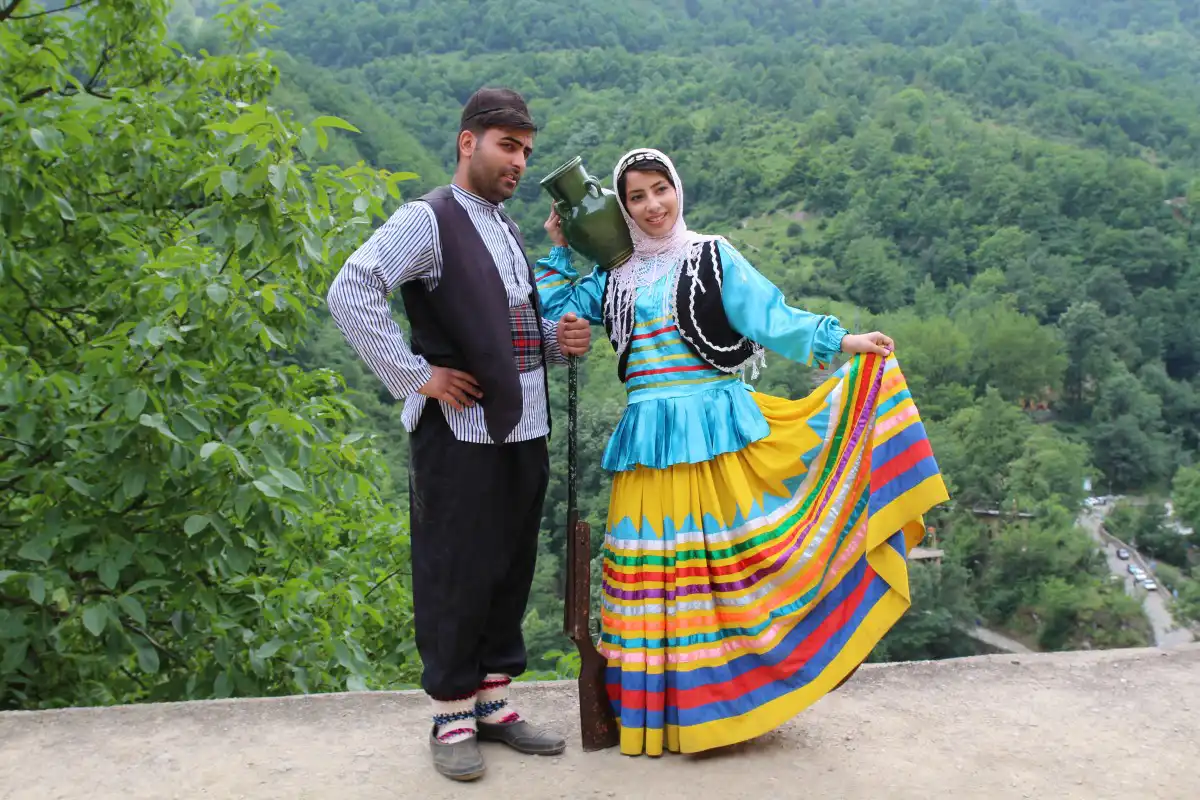
In southern Iran, along the Persian Gulf, the clothing adapts to the warm climate. Women wear dresses, head coverings, and trousers, often opting for a black silk scarf secured with a metal pin. Men typically wear a small cap with a long cloth wrapped around their body, paired with various types of traditional footwear.
These traditional outfits not only represent cultural identity but also highlight Iran’s rich history and customs. Exploring these diverse styles allows visitors to appreciate the cultural tapestry that defines different regions of Iran.
Dress Code in Religious Sites
When visiting religious sites in Iran, it’s important to dress modestly to show respect for the sacredness of these places. For women, this means wearing loose-fitting clothing that covers your entire body, including your arms and legs. Make sure to have a scarf that covers your hair and neck as well. This attire is a sign of reverence and is expected at religious sites throughout Iran.
Contrary to what some might think, wearing a “chador” is not obligatory everywhere in Iran. The requirement applies specifically to certain religious sites. If needed, you can easily borrow a chador at these locations or purchase it beforehand. This traditional garment covers the entire body and is worn over regular clothing as a sign of respect and adherence to local customs.
For men, it’s respectful to avoid wearing shorts when visiting these sites. Opt for long pants and a modest shirt instead. This attire shows your understanding and appreciation for the cultural and religious significance of the places you are visiting.
If you’re considering traveling to Iran, Our Iran offers personalized cultural, historical, adventure, and Ziyarat (pilgrimage) tours to enhance your experience. For more information, contact us via the chat icon on the bottom right.
Formal Dress Code in Iran
When attending formal events or business meetings in Iran, there are certain dress codes to keep in mind that reflect the local customs and expectations.
For men, the standard attire includes a suit, which is suitable for both business and formal occasions. It’s common practice for men in government sectors and affiliated corporations to not wear a tie, though this rule isn’t rigid. You have the flexibility to wear a tie if you prefer, as Iranians understand and respect different cultural dress norms. Foreign dignitaries and diplomats often wear ties as part of their attire, and in some private sector settings, businessmen may also choose to wear ties.
For women attending business or formal events, the typical attire includes a “manteau,” a long coat-like garment worn over regular clothing, paired with a scarf to cover the head. This ensemble is both modest and appropriate for professional settings in Iran.
Understanding and adhering to these dress codes not only shows respect for Iranian customs but also ensures you feel comfortable and confident during your business or formal engagements in the country. It’s a way to navigate cultural differences respectfully while presenting yourself professionally in diverse settings across Iran.
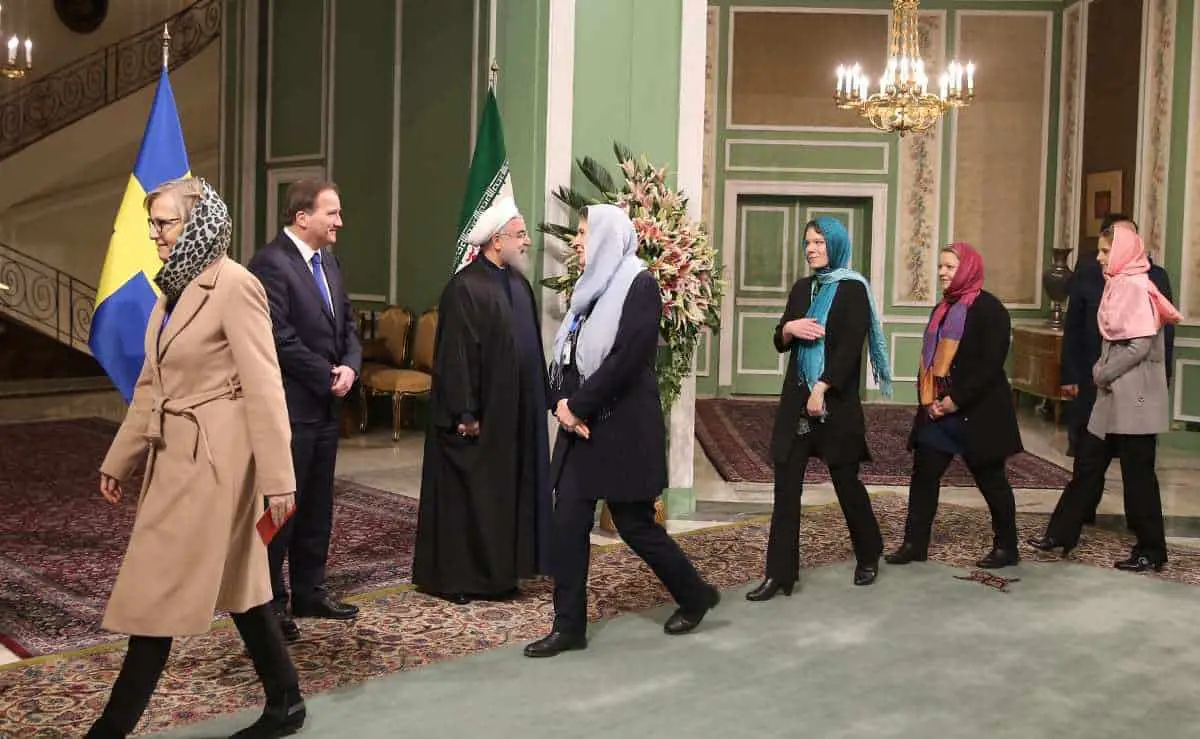
Indoor Versus Outdoor Clothing in Iran
When considering what to wear indoors versus outdoors in Iran, it’s important to understand the differences in dress codes and cultural expectations.
Indoors, such as in private homes or hotel rooms, there are no specific dress codes that travelers need to adhere to. You have the freedom to dress comfortably and according to your personal style. If you’re invited to an Iranian’s house, it’s courteous to respect their customs. There is also no hijab rules in women-only spaces like beauty salons and gyms.
It’s essential to note that areas like hotel lobbies, restaurants, and cars are still considered public spaces, so it’s advisable to follow the general outdoor dress code when in these areas.
Practical Tips for Tourists
Here are some practical tips to help you navigate the dress code norms in Iran smoothly:
It’s important to respect Iran’s dress code regulations, especially when you’re entering the country on international flights or at Iranian airports. You may be reminded to adhere to the local dress standards, which include covering your head and dressing modestly upon arrival.
During the hot summer months, you have the option to skip wearing a shirt under your coat or manteau to stay cool while still meeting the requirement of covering your body appropriately.
In winter, aside from covering your head, you can dress similarly to how you would in your home country. Layering with warm clothing under your coat or manteau will keep you comfortable while respecting local customs.
Iranians are generally warm and hospitable towards tourists and understand that visitors may not be accustomed to dressing conservatively like locals. Remember, the dress code applies primarily to public spaces. In private settings such as hotels and homes of locals, you can dress according to your comfort.
If your headscarf (shawl) slips off, don’t worry. Just calmly readjust it; it’s a common occurrence and not a cause for concern.
In cities like Yazd, which are more conservative compared to the capital Tehran, locals may look at you with curiosity if you are not dressed according to their norms. However, this is not meant to offend you; it’s simply a reflection of their adherence to traditional values.
If you find yourself unsure about what to wear or don’t have suitable clothing, a long tunic paired with a headscarf is generally acceptable. You can easily find colorful shawls and comfortable manteaus (coats) at local bazaars or shopping centers to enhance your wardrobe during your stay.
By keeping these tips in mind, you’ll navigate Iran’s dress code with ease and enjoy a respectful and enjoyable experience during your visit.
